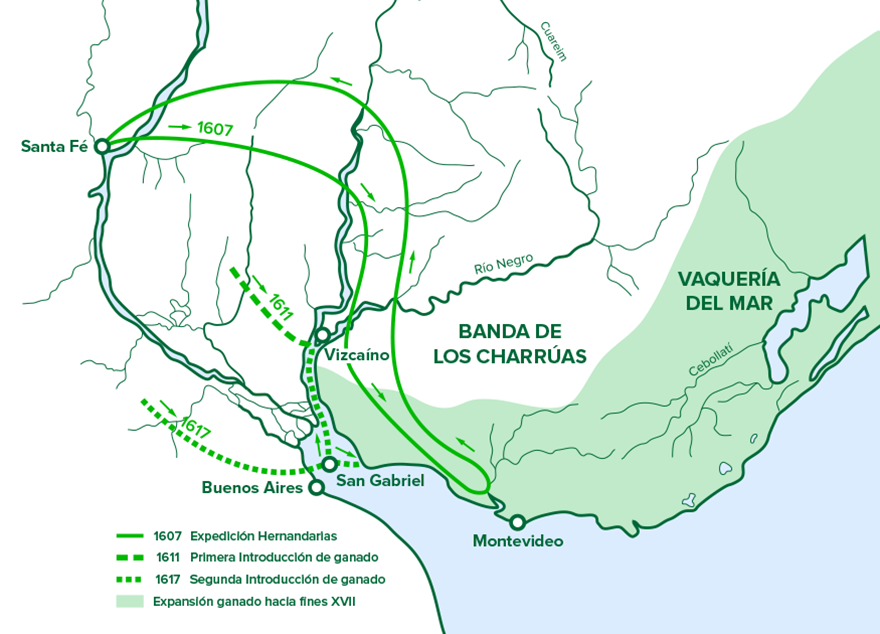A tradition
At the beginning of the XVII century Hernandarias introduced the first cattle herds to the Oriental territory (as it was called at the time). Since then, and due to the generous agro-climatic conditions of the country, livestock business has consolidated itself as the fundamental fuel to the economy.
Uruguay produces about 550 thousand tons of beef meat a year, 180 thousand tons are internally consumed and 370 thousand tons are exported. The destinations of said exports are more than 100 countries in the five continents, to which Uruguay can access thanks to its privileged sanitary conditions and its very reliable traceability system. Meat export represents almost a 25% of the country’s exports.
World consumers recognise the quality of Uruguayan meats for their natural pastoral production, performed in great animal welfare conditions,
added to the genetic quality that the British breeds raised in our fields provides.
Currently Uruguay is the first country in the world in terms of beef meat consumption in the world, with 61 kilos per capita yearly. The cattle population in Uruguay is of almost four heads per inhabitant, one of the highest ratios in the world. There is a mature production chain in which all the links are strongly integrated: producers, industry, technicians, exporters, health controllers, transporters and the government, who work in harmony, providing strength and stability to the niche.

